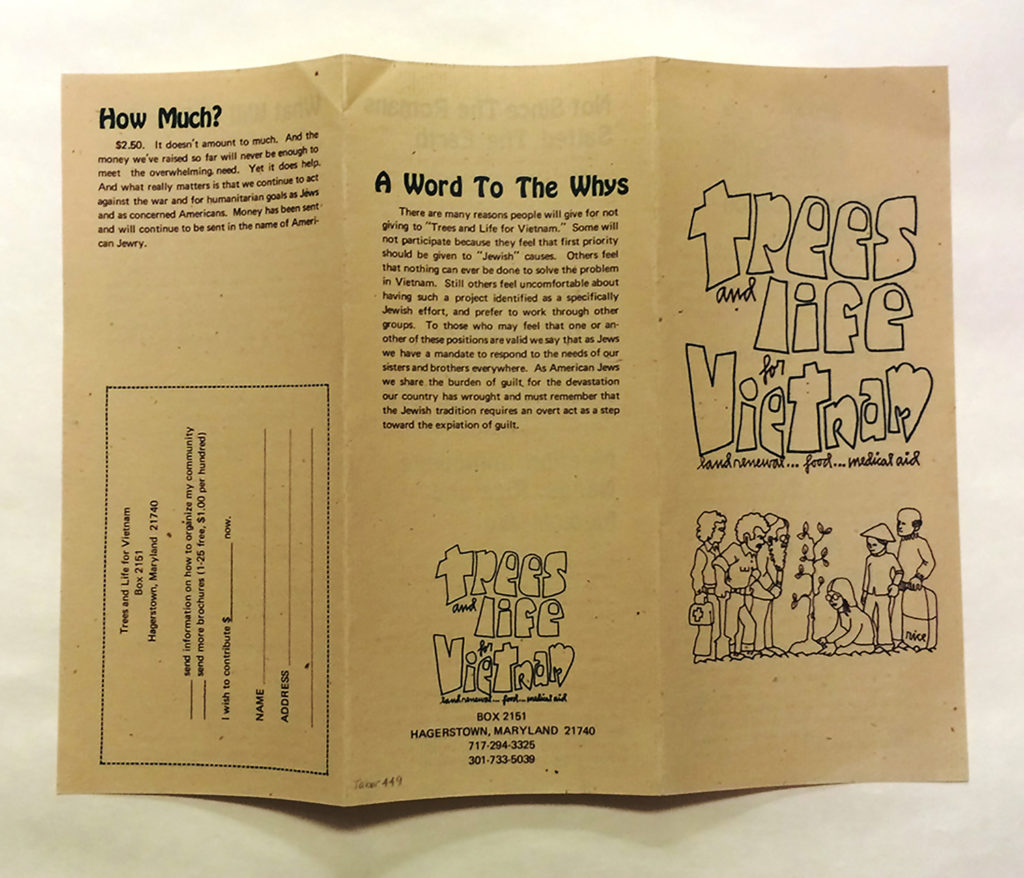The Whole Spiel
Collection Highlight: Trees and Life for Vietnam
by Sarah Leavitt, Curator
January 20, 2022
Every year on the Jewish holiday of Tu B’shvat (the 15th day of the Hebrew month of Shevat, which fell this year on January 17), observers celebrate what is affectionately known as the new year of the trees, or “Jewish Earth Day.” In the 1950s and 1960s and beyond, many American synagogues and organizations also celebrated Tu B’shvat by collecting and donating money to plant trees in the State of Israel.

Back cover of a Trees and Life for Vietnam brochure. Capital Jewish Museum, Mike Tabor Collection
Building on this connection between Judaism, ecology, and planting trees overseas, an organization called “Trees and Life for Vietnam” noted that Jews had an obligation to rebuild land devastated by US military policy during the Vietnam War. By agreeing to be an honorary chair, leading Jewish thinker Rabbi Abraham Joshua Heschel gave weight to the connections between Jewish theology and activism. The group held events—congress member Bella Abzug spoke about Judaism and the war at a Tu B’Shvat celebration in 1972—and raised funds for tree planting until disbanding in 1990.

Interior page of a Trees and Life for Vietnam brochure. Capital Jewish Museum, Mike Tabor Collection
Trees and Life for Vietnam especially welcomed the support of young people—the Reform movement’s National Federation for Temple Youth (NFTY) and the Conservative movement’s United Synagogue Youth (USY), as well as the Hillel Foundation were sponsoring organizations. Local DC and Maryland progressive activists such as Mike Tabor and Arthur Wascow helped lead the group. “To have so devastated the land that it can never again support life,” reads the brochure in the Museum’s collection, “is to condemn future generations to squalor and misery.” But the group promised that the concrete action of restoring the land was within reach.
So many of the world’s problems seem out of our control, argued the activists, but we have the ability to act and help protect the earth. “What can we do? We can plant a tree.”